Come and visit us at our new showroom: 1226 N Roselle Road Schaumburg, IL 60195
Drapes
Drapery Panels
-
"Are available in a variety of neutral fabrics to complement shades and add a new design dimension to your room. Combine and pair with blinds to add flair and creativity that reflect your unique personality. They can be ordered in durable fabrics and finishes that are easily cleaned and extend the life span of your panels, helping to reduce the need for replacement."
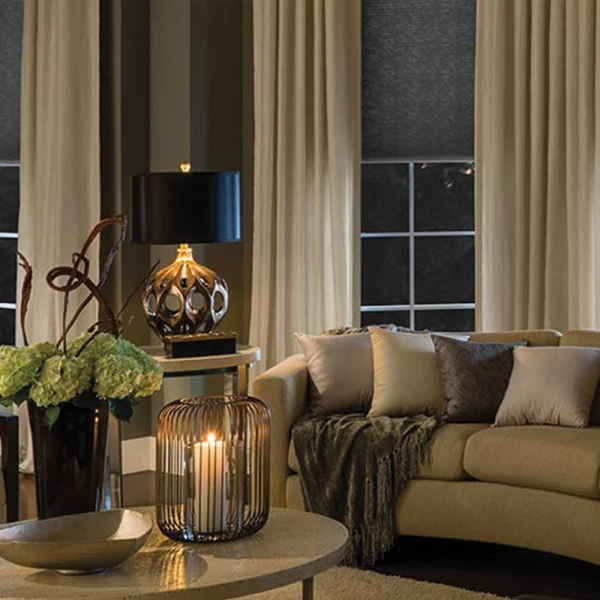
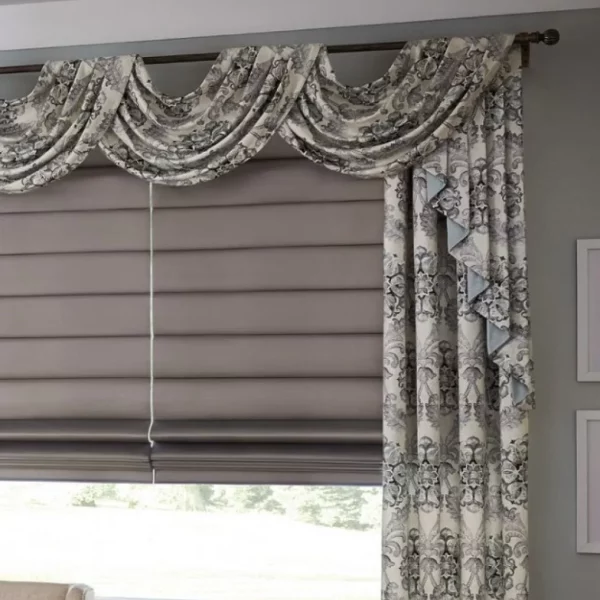
Valances and Cornices
-
Sophisticated valances, stately cornices, and dramatic swags and cascades add the perfect finishing touch to your windows. Custom sizing and a wide range of premium materials and styles allow Marqi Blinds top treatments to complement any window treatment.
The Perfect Combination of
Comfort and Elegance :
Motorized Curtains & Drapes
- With our motorized curtains and app, you can control all your curtains easily via your smartphone or a single remote control. Effortlessly protect your curtains from tearing and keep them perfectly aligned.
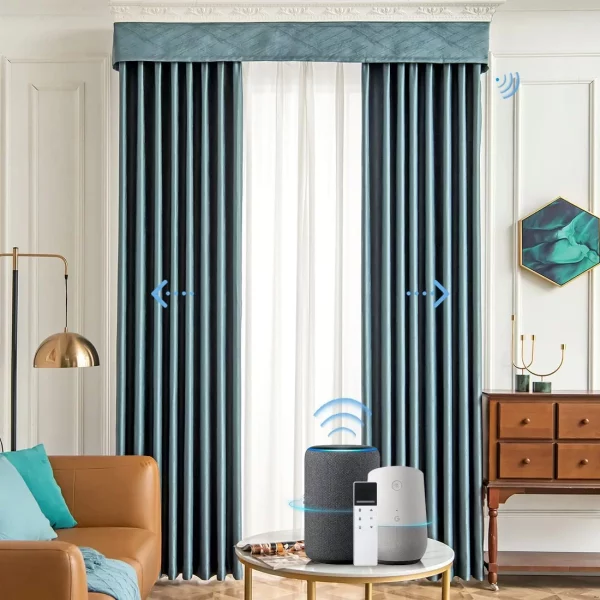
Drapes Gallery
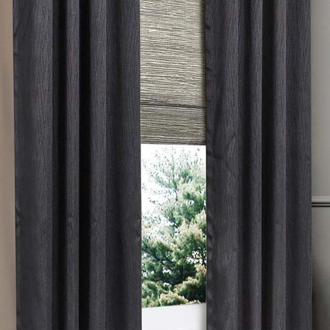
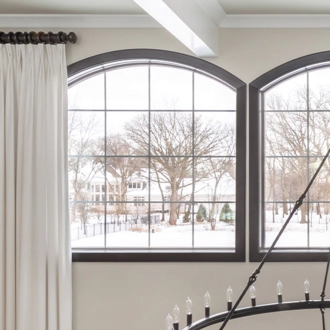
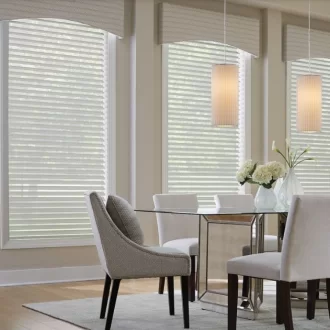
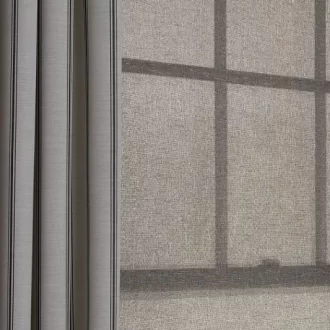

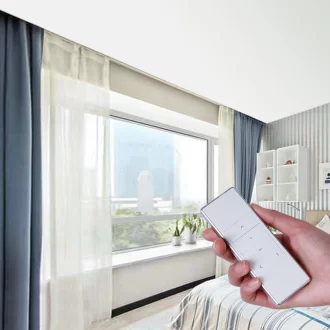
What are Drapes?
Drapes are fabric panels that can be lined or unlined and cover windows for decorative and functional purposes. They are typically made from heavier materials than curtains, offering better light control, privacy, and insulation. Drapes often hang from rods via hooks or rings and can be opened or closed using a pull cord or rod. Their aesthetic appeal enhances a room’s decor, making them a popular choice for adding elegance and style to interior spaces.
What are The Types of Drapes?
Drapes are a versatile window treatment option that can elevate any room’s aesthetic while providing privacy and light control. With various styles available, choosing the right type of drapes can significantly impact the look and feel of your space. From classic to contemporary, the types of drapes listed below cater to diverse tastes and functional needs, ensuring a perfect match for every interior design scheme.
- Panels
- Valances
- Cornices
- Motorized curtains and drapes
- Blackout drapes
- Sheer drapes
- Thermal or insulated drapes
- Patterned and printed drapes
- Lined drapes
- Pleated drapes
1. Panel Drapes
Panel drapes are a type of window treatment consisting of individual flat fabric panels that can be hung straight down from a rod, often featuring a pocket, rings, or grommets at the top for attachment. They can be made from various materials and come in different lengths and widths to fit various window sizes. Panel drapes are versatile, suitable for both decorative and functional purposes, allowing for light control and privacy and enhancing the overall aesthetic of a room.
2. Valances
Valances are decorative window treatments positioned at the top of windows to conceal curtain rods and hardware. They serve aesthetic and functional purposes and add a finishing touch to window dressings, enhancing the room’s decor by introducing color, pattern, and texture. Valances can be styled in various shapes and designs, from simple straight cuts to elaborate swags, and are often used in combination with curtains, blinds, or alone to create a statement.
3. Cornices
Valances are decorative window treatments positioned at the top of windows to conceal curtain rods and hardware. They serve aesthetic and functional purposes and add a finishing touch to window dressings, enhancing the room’s decor by introducing color, pattern, and texture. Valances can be styled in various shapes and designs, from simple straight cuts to elaborate swags, and are often used in combination with curtains, blinds, or alone to create a statement.
4. Motorized Curtains and Drapes
Motorized curtains and drapes are window treatments equipped with an electric motor. They can be opened and closed automatically with a button, remote control, or smart home systems. They offer convenience, accessibility, and enhanced functionality, particularly for hard-to-reach windows or as part of a home automation setup. They provide a seamless and efficient way to manage light and privacy in a space.
5. Blackout Drapes
Blackout drapes are heavy window coverings designed to block out almost all light from entering a room. They are made from dense, opaque fabrics or materials with a light-blocking layer, making them ideal for bedrooms, home theaters, or any space where controlling light is essential. Besides light control, blackout drapes also provide privacy, noise reduction and can help save energy by insulating the room.
6. Sheer Drapes
Sheer drapes are lightweight, translucent fabric panels used for window treatments. They allow natural light to enter the room while providing privacy. Sheer drapes soften the room’s look and add an airy, delicate feel. They can be used alone or layered with heavier curtains for added style and functionality. Their versatility makes them a popular choice for enhancing the aesthetic appeal of windows in various interior design settings.
7. Thermal or Insulated Drapes
Thermal or insulated drapes are designed to provide an additional layer of insulation to windows, helping to maintain a consistent indoor temperature by reducing heat loss in winter and heat gain in summer. Made from thick, heavy materials or lined with a special insulating layer, these drapes can significantly enhance energy efficiency in a home, contributing to lower heating and cooling costs and improving comfort.
8. Patterned and Printed Drapes
Patterned and printed drapes feature various designs, colors, and motifs printed or woven into the fabric, adding a decorative element to a room’s decor. These drapes can range from subtle, intricate patterns that complement a room’s existing aesthetic to bold, vibrant prints that serve as a focal point or statement piece. Suitable for any room, patterned and printed drapes offer a way to inject personality and style into a space, enabling homeowners to customize their interior design according to their preferences and the overall theme of their home.
9. Lined Drapes
Lined drapes consist of a secondary fabric attached to the back of the drapery fabric, providing additional benefits such as improved light blocking, enhanced privacy, and better insulation. The lining can also help protect the main fabric from sun damage, extending the life of the drapes and improving their appearance by giving them a fuller look.
10. Pleated Drapes
Pleated drapes feature fabric folded and sewn into pleats, creating a tailored look. These pleats add structure, allowing the drapes to hang neatly and elegantly. Common types include pinch pleats, box pleats, and goblet pleats, each offering a different aesthetic. Pleated drapes are versatile, fitting both formal and casual settings, and can be made from a variety of materials to match room decor.
What are The Costs of The Drapes?
The costs of drapes vary widely depending on factors such as material, size, brand, and whether they are custom-made or off-the-shelf. Prices can range from as low as $20 for simple, ready-made panels to several hundred dollars per panel for luxurious, custom-designed options. High-end materials, intricate designs, and additional features like thermal lining or motorization can significantly increase the price. It’s best to consult with professionals, retailers, or manufacturers for accurate pricing based on your specific requirements.
How to Choose the Right Drapes?
Choosing the right drapes involves considering the room’s decor style, the desired function of the drapes (such as light filtering or insulation), and the window dimensions. Selecting a fabric and color complements the room’s aesthetic is also important. Assessing the hardware for hanging the drapes and deciding on the level of maintenance you’re willing to undertake are also key factors.
How to Match Drapes with Hause Decor
Matching drapes with house decor enhances the ambiance and functionality of a space. Consider these tips for a harmonious look:
- Understand the Room’s Theme: Select drapes that complement the room’s existing theme, whether contemporary, traditional, rustic, or minimalist.
- Color Coordination: Choose colors that match or contrast beautifully with your room’s color palette. Drapes can be a focal point or blend seamlessly.
- Material Matters: The fabric of the drapes should align with the mood you want to create. Luxurious materials like silk or velvet add elegance, while cotton or linen offer a casual feel.
- Pattern Play: If your room has solid colors, consider drapes with patterns to add visual interest. Conversely, solid drapes can balance the look if your furniture or walls are patterned.
- Light and Privacy: Consider the purpose of the drapes. Sheer fabrics allow more light and suit living areas, while heavier fabrics offer privacy and are ideal for bedrooms.
- Length and Lining: The length of the drapes can impact the room’s look. Floor-length drapes convey a formal aesthetic, whereas shorter lengths are more casual. Lined drapes can provide additional insulation and darkness.
- Hardware Harmony: The rods and rings used to hang the drapes should also match the room’s decor style. Metal finishes for a modern look or wooden for a traditional setting can complement the overall theme.
- Layering: Layering drapes with blinds or sheers can add depth and functionality, allowing for adjustable light control and privacy.
- Customization: Consider custom-made drapes for a perfect fit, especially for non-standard window sizes or to meet specific design requirements.
By keeping these aspects in mind, you can choose drapes that match your house decor and enhance your home’s overall aesthetic and functionality.
What are The Creative Ways to Use Drapes?
Exploring creative uses for drapes can transform your living space in unique ways:
- Room Dividers: Use drapes to subtly divide open spaces into distinct areas.
- Decorative Backdrops: Create a focal point behind beds or seating with elegantly hung drapes.
- Wall Tapestry: Hang drapes on walls to add texture and color.
- Canopy Beds: Craft a luxurious canopy over beds for a touch of romance.
- Home Decor: Repurpose drapes into items like tablecloths or pillow covers for a coordinated look.
These ideas showcase the versatility of drapes beyond traditional window treatments.
What are The Benefits of Drapes in Interior Design?
Drapes are a critical component of interior design, offering a blend of aesthetic appeal and practical benefits:
- Decorative Impact: Drapes add a layer of sophistication and style to any room with their diverse range of textures, colors, and patterns. They can act as a focal point or complement the existing decor.
- Privacy Enhancement: Providing privacy, drapes can be adjusted to prevent outside visibility, ensuring a comfortable and secure living space.
- Light Control: Effective in blocking out unwanted light, drapes can darken a room for better sleep or viewing screens without glare.
- Energy Efficiency: Drapes improve a room’s insulation, saving energy. Properly insulated windows can reduce energy loss by up to 25%, helping to lower heating and cooling costs.
- Sound Absorption: By absorbing sound, drapes contribute to a quieter, more peaceful environment, making them ideal for bedrooms, study areas, and living spaces that benefit from reduced noise levels.
- Customization and Versatility: With endless customization options, drapes can be tailored to fit any window size, style, and decor preference, offering a personalized touch to interior design.
By integrating these elements, drapes enhance a space’s visual appeal and contribute significantly to its comfort and functionality.
Custom Drapes
Custom drapes offer personalized options for window treatments, allowing for tailored sizes, fabrics, colors, and designs to perfectly match your interior decor. This customization ensures a perfect fit for any window dimensions and meets specific aesthetic and functional needs, from light filtering to thermal insulation.
Custom drapes provide an opportunity to enhance the aesthetic appeal and functionality of any space with a personalized touch. A detailed look at what custom drapes offer is listed below:
- Tailored Sizing: Unlike ready-made curtains, custom drapes are made to measure, ensuring a perfect fit for any window, regardless of its size or shape. This is particularly beneficial for non-standard windows that don’t match off-the-shelf dimensions.
- Wide Selection of Fabrics: Customization allows access to a broader range of fabrics, from luxurious silks to practical cotton blends, catering to different needs such as durability, light filtering, and ease of cleaning.
- Color and Pattern Customization: With custom drapes, you can select from various colors and patterns to match or complement your interior design. This flexibility ensures that the drapes will integrate seamlessly with your decor.
- Unique Styles and Features: You can choose from various styles, such as pleated, grommet, or rod pocket, and add features like thermal lining, blackout capabilities, or motorization for enhanced functionality.
- Quality Craftsmanship: Custom drapes are typically crafted with a higher level of attention to detail and quality, resulting in a superior finish and longer-lasting window treatments.
- Professional Consultation and Installation: Many custom drape providers offer design consultation to help select the best materials, styles, and features for your needs. Professional installation services ensure the drapes are hung correctly for optimal performance and appearance.
- Efficiency and Comfort: By selecting materials and features that suit your climate and window orientation, custom drapes can improve energy efficiency by retaining heat in winter and blocking out heat in summer, contributing to a more comfortable indoor environment.
Investing in custom drapes means choosing quality, precision, and individuality, ensuring that your window treatments are functional and a perfect reflection of your personal style and the character of your home.
How to Install The Drapes?
Installing drapes can enhance the ambiance and functionality of any room. Here’s a step-by-step guide to ensure a smooth installation process:
Tools and Materials Needed:
- Measuring tape
- Drill
- Screwdriver
- Wall anchors (if needed)
- Level
- Curtain rods, brackets, and finials
- Drapes
- Steps for Installation
- Measure Your Window
Step-by-Step Installation
- Measure Your Window: Measure the width of your window and decide how far you want the drapes to extend on either side. Extending the rod 6-12 inches (15.24-30.48 cm) beyond the window frame on each side makes the window appear larger and allows more light when the drapes are open.
- Determine Rod Height: Position the rod 4-6 inches (10.16- 15.24 cm) above the window frame to make the room look taller. You can go even higher up to the ceiling for a dramatic effect.
- Mark Bracket Placement: Use a pencil to mark where the brackets will go, ensuring they align with your measurements for width and height. Use a level to confirm that the marks are even.
- Install Brackets: Drill pilot holes at your marked spots. If you’re drilling into drywall without a stud behind it, use wall anchors to secure the brackets. Screw the brackets into place.
- Attach the Curtain Rod: Place the curtain rod into the brackets. If your rod comes in two parts, adjust it to your desired length before placing it.
- Hang Drapes: If your drapes have grommets or hooks, thread them onto the rod. For pinch-pleat drapes, hooks inserted into the back of the drapes will hang from rings or carriers on the rod.
- Adjust and Finalize: Once the drapes are hung, adjust them to distribute the fabric evenly. Attach finials to the ends of the rod for a finished look.
- Steam or Iron: Remove any wrinkles or folds from the drapes by steaming or ironing them, following the manufacturer’s care instructions.
Additional Tips
- Before drilling, check for any plumbing or electrical lines in the walls.
- Consider the drape’s weight when selecting hardware to ensure it can support the drapes without sagging.
- Secure the brackets into studs or use appropriate wall anchors for heavy drapes.
Following these steps, you can successfully install drapes that enhance your space’s aesthetic and offer functional benefits like privacy and light control. It would also be a good idea to ask for help from professionals for complicated projects for a smoother installation.
How to Care of Your Drapes?
To properly care for your drapes and ensure their longevity, follow these guidelines:
Regular Maintenance: Dust or vacuum your drapes regularly to remove dust and prevent accumulation.
Deep Cleaning: Follow the manufacturer’s cleaning instructions. Some drapes may be machine washable, while others require dry cleaning.
Stain Management: Address spills and stains immediately with appropriate cleaning methods to avoid permanent damage.
Sunlight Protection: Use UV protectant sprays for drapes in direct sunlight to prevent fading.
Refreshing Fabric: Periodically take down the drapes to shake out or air them outside, helping to refresh the fabric and eliminate odors.
Professional Help: For difficult stains or delicate fabrics, consider professional cleaning services to ensure proper care without damaging the material.
Implementing these care tips will help maintain the appearance and integrity of your drapes, contributing to a beautiful and comfortable home environment.



